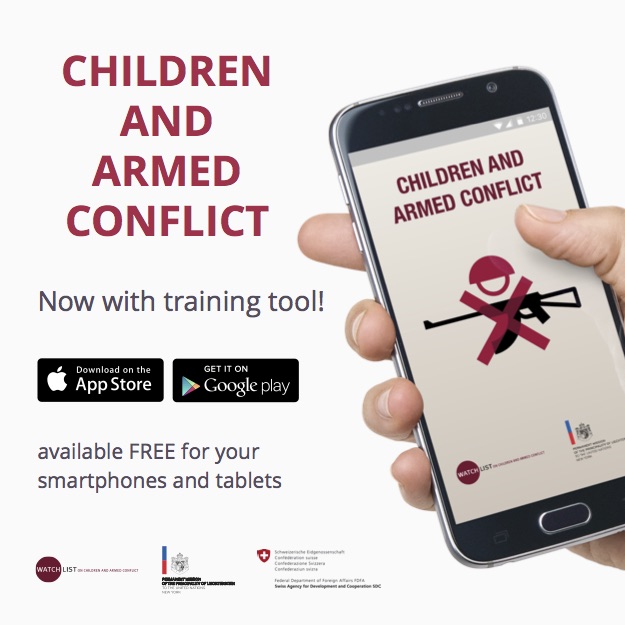This past weekend marked four months since COVID-19 was declared a global pandemic. Although children who contract the virus generally have less severe symptoms and lower mortality rates than other age groups, they are especially vulnerable to its secondary and tertiary effects, many of which are likely to have long-term, devastating impacts.
Previous experience from other epidemics such as Ebola has shown that such a health crisis can trigger additional exclusion, discrimination, and violence against children, particularly for those already in vulnerable situations. These include children living in poverty, those with disabilities, street children, girls, refugees and children on the move, and children affected by armed conflict.
In April, Watchlist published a two-page factsheet on COVID-19 and the risks it poses for children affected by war. It highlights the challenges these children face in adapting to basic prevention measures, especially given their limited access to clean water, adequate housing, healthcare, and information. Watchlist also notes that war-torn countries generally have weaker healthcare and social protection systems – many of which have been destroyed or are inaccessible due to conflict – and therefore may be poorly equipped to respond to the pandemic. A recent report from the Safeguarding Health in Conflict Coalition documents more than 1,200 violent attacks and threats against health workers, medical facilities, ambulances, and patients in 20 conflict-affected countries in 2019.
Just last week, northwest Syria reported its first confirmed case of COVID-19, compounding concerns about access to lifesaving humanitarian assistance for children and other civilians in the region. According to Save the Children, there are just 153 ventilators and 148 beds in intensive care units for a population of millions, including more than 1.5 million people displaced from their homes as a result of the conflict. The situation is further exacerbated by the UN Security Council’s decision over the weekend to further limit cross-border humanitarian access to Syria through removing a key crossing point in the Northwest.
The UN Secretary-General’s recent annual report on children and armed conflict highlights a troubling increase in denial of humanitarian assistance to children. Mitigating measures such as lockdowns, service closures, and movement restrictions applied in contexts already affected by conflict may further hinder access and the delivery of lifesaving assistance to children. Threats against frontline health staff working on COVID-19 have risen dramatically since the World Health Organization declared the global pandemic in March, according to Insecurity Insight. The Geneva-based group tracking threats in crisis areas has recorded more than 265 violent incidents related to the coronavirus, including the recent killing of an ambulance driver transporting COVID-19 test results in Myanmar’s Rakhine State.
Children in detention also face heightened risks of the virus, as they are often held in crowded, unsanitary conditions with inadequate access to nutrition, healthcare, and hygiene services. UNICEF, Watchlist, and other groups have called on governments and other detaining authorities to urgently release all children who can safely return to their families or an appropriate alternative, such as to extended families or other family- or community-based care. However, only about 20 countries are known to have released children from detention facilities in efforts to limit the impact of COVID-19, according to Human Rights Watch; in comparison, adult detainees have been released in at least 79 countries in response to the pandemic.
Watchlist’s Director Adrianne Lapar recently spoke about the impacts of COVID-19 on children in conflict-affected countries on Rising to Respond, a podcast from World Vision International. The new podcast provides a behind-the-scenes look at the humanitarian response to the global pandemic, with a focus on addressing the needs of the most vulnerable children.
In Episode 2 of the podcast, Lapar highlights the heightened vulnerability of children in war-torn countries, including the risk of military occupation of schools during the pandemic, which can make it even more difficult for children to resume their formal education even after restrictions have been lifted. She notes the challenges to monitoring, reporting, and responding to grave violations against children in armed conflict due to access restrictions, warning that children may suffer in silence as a result of the pandemic. Watchlist supports the UN Secretary-General’s appeal for a global ceasefire and the Security Council’s call for an immediate end to hostilities and a humanitarian pause in conflict zones across the world.
For more information:
Read Watchlist’s Factsheet on COVID-19 and Children in Armed Conflict.
Listen to WVI’s Rising to Respond podcast: https://traffic.libsyn.com/secure/worldvisionpodcast/Episode-2-COVID-19-and-Children.mp3.



